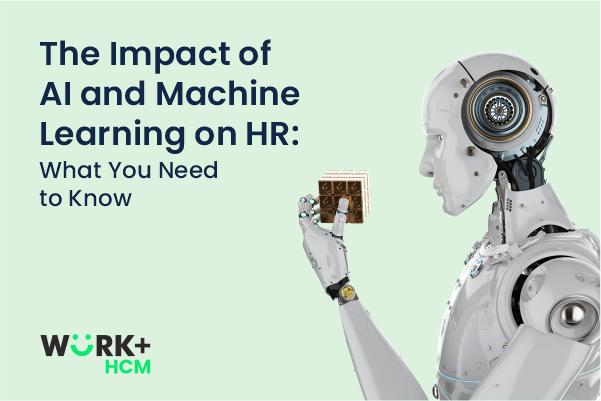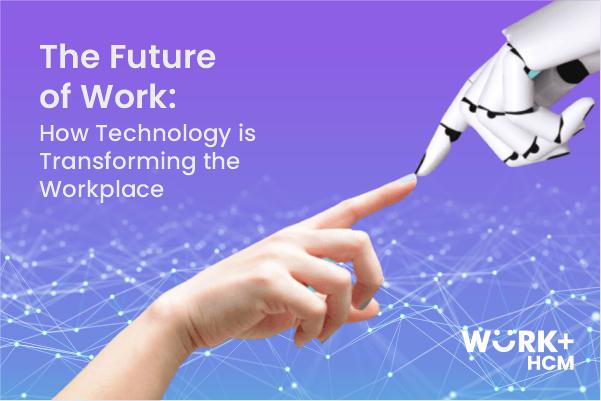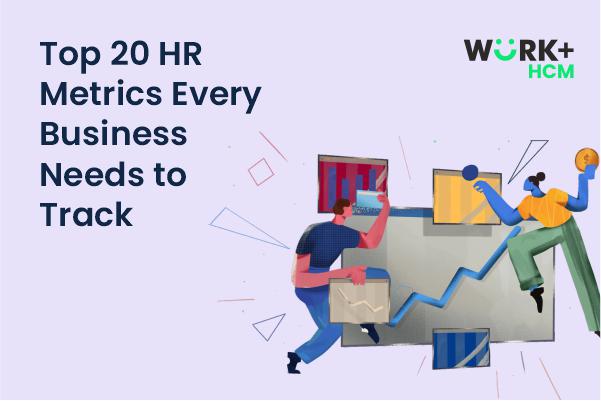Top 10 HR Metrics Every CEO Should Track

Top 10 HR Metrics Every CEO Should Track in 2025
Jessica Calaoagan
October 6, 2025 | 8-mins read
Human Resources has undergone a major change from a function that was located in the back office to a driver of competitive advantage in today’s volatile business environment. Also, in the UAE and other places, the use of HR metrics and people analytics has gone to another level, and the CEOs are greatly depending on it for measuring workforce performance, improving decision-making, and aligning talent strategies with business goals. Knowing what the most important metrics are and how to use them effectively has become the CEO’s growth journey in 2025.
This article centers on the top 10 HR metrics every CEO should track in 2025, predicting the potential of analytics to disclose insights and giving guidance on creating efficient dashboards, ensuring data hygiene, and security in integrating multiple HR systems.
1. Turnover Rate
Employee turnover continues to be the most significant sign of the corporate health condition. Chief Executives are required not only to monitor the total turnover but also to drill down by department or function.
- High turnover in sales or customer service may give rise to an indication of cultural misalignment or leadership issues.
- The employee turnover in the technical area can be interpreted as the lack of career growth opportunities or the mismatch of skills.
- Monitoring turnover by job function allows leaders to allocate treatment more correctly than using simple retention strategies, which are common.
2. Absenteeism Rate
Absenteeism is a situation that affects the efficiency of work directly; besides which it also impacts the morale of the team and the delivery of the project. A CEO should keep an eye on such trends as:
- Regular absences in particular departments.
- Seasonal increases could be an indication of work-life balance issues.
- An association between absenteeism and the employee engagement scores.
The decrease of absenteeism through the use of fitness programs, flexible work policies, and the engagement of employees in a proactive manner not only results in cost savings but also in the stability of the workforce.
3. Time to Hire
In the rapidly changing job market in the UAE, time to hire is an essential measure of how competitive the company is. The lengthy processes of hiring result in the company not being able to take advantage of new possibilities, projects that are delayed, and the existing staff having to do more work. By calculating the average number of days to get a position filled, chief executives are in a position to evaluate the effectiveness of their recruitment pipelines. Usually, a reduction of this measure requires more efficient application of HR automation tools in the UAE, such as AI-powered candidate screening.
4. Quality of Hire
Hiring timing, for instance, would have no real significance if the quality of the candidates is not ensured. The indicator measures the long-term benefit of new employees by gauging their work, adaptability to company culture, as well as staying after half a year up to one year. Analyzing this metric helps the chief executive officers (CEOs) to figure out if the hiring plans they are implementing are bringing the firm the right kind of people or just filling the vacancies temporarily.
5. Employee Engagement
Engagement is the life or the “heartbeat” of employee productivity. A low level of engagement has a domino effect, which results in higher turnover, absenteeism, and poor customer service. The chief executive officers (CEOs) ought to assess the involvement through frequent surveys, pulse checks, and performance reviews. The engagement metrics must be incorporated into the people analytics strategies that offer CEOs the insight into how the change in culture or leadership may have an impact on the mood of the staff.
6. Skills Coverage
Skills are the currency in the knowledge-based economy of the UAE. Skills coverage shows if the company has the necessary competencies to achieve current and future goals.
- AI-powered HR software helps a CEO with skill mapping tech to be used for skills mapping across departments.
- Skills shortage trends can be predicted by the use of predictive analytics based on industry trends.
- Through the monitoring of skills coverage, the management can be sure that the workforce planning is compatible with the digital change and the movement of the sector.
7. Cost per Hire
Recruitment costs are significant, especially in industries with high turnover. This metric considers advertising expenses, recruiter salaries, technology tools, and onboarding costs. By benchmarking cost per hire, CEOs can identify inefficiencies and determine whether investments in smart HR software UAE are delivering measurable ROI.
8. Onboarding Time
Hiring new employees who quickly become productive is the best indication that the money spent on recruitment was well invested. So, it is in the CEO’s interest to keep track of the average time for the onboarding process, from day one until the worker is fully productive.
- New hire digital onboarding that is streamlined cuts the time and enhances employee satisfaction.
- In addition, an automated system is there to ensure total compliance with UAE labor laws and, at the same time, to reduce the number of mistakes that occur in the organization.
9. Employee Productivity Index
This indicator measures the output of the workforce as compared to the expenses. Chief executive officers can ascertain the productivity of the company by merging performance evaluations, completion times of projects, and turnover per employee. As a predictive measure, it enables CEOs to strike a balance between the number of employees and financial effectiveness.
10. Diversity and Inclusion (D&I) Metrics
In the UAE, diversity and inclusion have become two sides of the same coin in the multicultural workforce, which means that they are both ethical values and requirements for the business. Monitoring D&I metrics – for example, the number of employees from various nationalities or the gender ratio in leadership positions, and the issue of equal pay – gives CEO’s an insight into fairness within the organization. Inclusivity in an organization is often associated with achieving success beyond competitors in terms of both innovation and employee loyalty.
Using Predictive Analytics for Smarter Decisions
Although these metrics are very important, the main door to power opens through predictive analytics. By mining the historical data, CEOs are able not only to anticipate but also to engage in foresight action:
- Turnover forecasts:The models can identify the areas where attrition will be high even several months ahead, thus giving the possibility for retention work to be carried out in a targeted manner.
- Skills forecasting:The predictive instruments reveal the skills that are coming to be lacking, thus enabling the CEOs to allocate the training budget before the shortages occur.
- Absenteeism patterns:The staff leave records over a period can provide a picture of seasonal peaks; therefore, the managers can easily match the workforce with the anticipated demand.
Through predictive analytics, HR gets elevated from a reporting function to a strategic partner; consequently, workforce planning becomes harmonized with corporate growth goals.
Building Dashboards That CEOs Trust
Just numbers do not persuade to carry out the desired activities; it is the dashboards that show them clearly and, in their context, which have that power. A working HR dashboard in the UAE ought to:
- Break down the data by stakeholder:HR requires the minute detail, the finance is interested in the cost aspect, operations want the productivity pieces, and the boards look for the strategic overview.
- Incorporate the visual narrative:The CEO can rapidly take in the insights through the use of such tools as heatmaps, trend lines, and forecasting graphs.
- Offer the drill-downs:The executives should not feel restricted from going from overall KPIs to the specifics of the department.
CEOs can take quicker, data-driven decisions by making HR data available in a format suitable for the board.
Data Hygiene, Privacy, and Integration
The value of HR metrics depends entirely on data integrity. CEOs must ensure:
1. Data Hygiene
- Regular checks to get rid of duplicate or outdated records.
- Defined metrics that are standardized for use across departments.
- Human resource systems that have errors automatically checked.
2. Privacy and Compliance
- Observance of data protection laws in the United Arab Emirates, with particular attention to the sensitive information of employees.
- The use of access control based on the user role hides dashboards from people who are not authorized and prevents the unauthorized use of personal data.
3. System Integration
Workforce analytics are usually derived from a variety of different sources—HRMS, payroll, performance management, and engagement tools.
- An integrated platform minimizes data silos.
- APIs and cloud-based solutions allow easy transfer of data without any interruption.
- Firstly, compliance risks and reporting inaccuracies are reduced with the use of centralized systems.
For CEOs seeking reliable integration, Our HR Software UAE provides an all-in-one solution designed for the UAE market.
Case for CEOs in 2025: Metrics as a Strategic Lever
CEOs in 2025 will not be able to depend only on their gut feelings. Counting these top 10 HR metrics is the best way for executives to get an instant feeling of the health of their organization, discover hidden areas, and tailor workforce strategies to the company’s objectives. Such companies that do not take up strong people analytics will be outperformed by those that gather data to predict talent needs, cut costs, and win employee loyalty.
For deeper insights on the evolving role of HR metrics, CEOs and HR leaders can explore this related blog: Top HR Metrics.
Conclusion
UAE is always pushing the narrative that they are the best place to innovate, and the CEOs have to visualize the employee data as their most valuable strategic asset. Monitoring turnover, absenteeism, time to hire, quality of hire, engagement, skills coverage, cost per hire, onboarding time, productivity, and D&I metrics enables leaders to understand the lifeblood of their organization from a systems viewpoint. The CEOs, through predictive analytics, visually impactful dashboards, and integrated HR systems, not only get the power to act but also to anticipate and plan their leadership actions.
The journey begins with adopting the right tools. Workplus HCM in UAE equips CEO’s with advanced analytics and seamless integrations, ensuring HR data is accurate, actionable, and aligned with strategic goals. Those CEOs who will become proficient in HR metrics in 2025 and later will not merely oversee their staff but rather will direct them to a positive future comprising innovation, strength, and long-lasting development.


